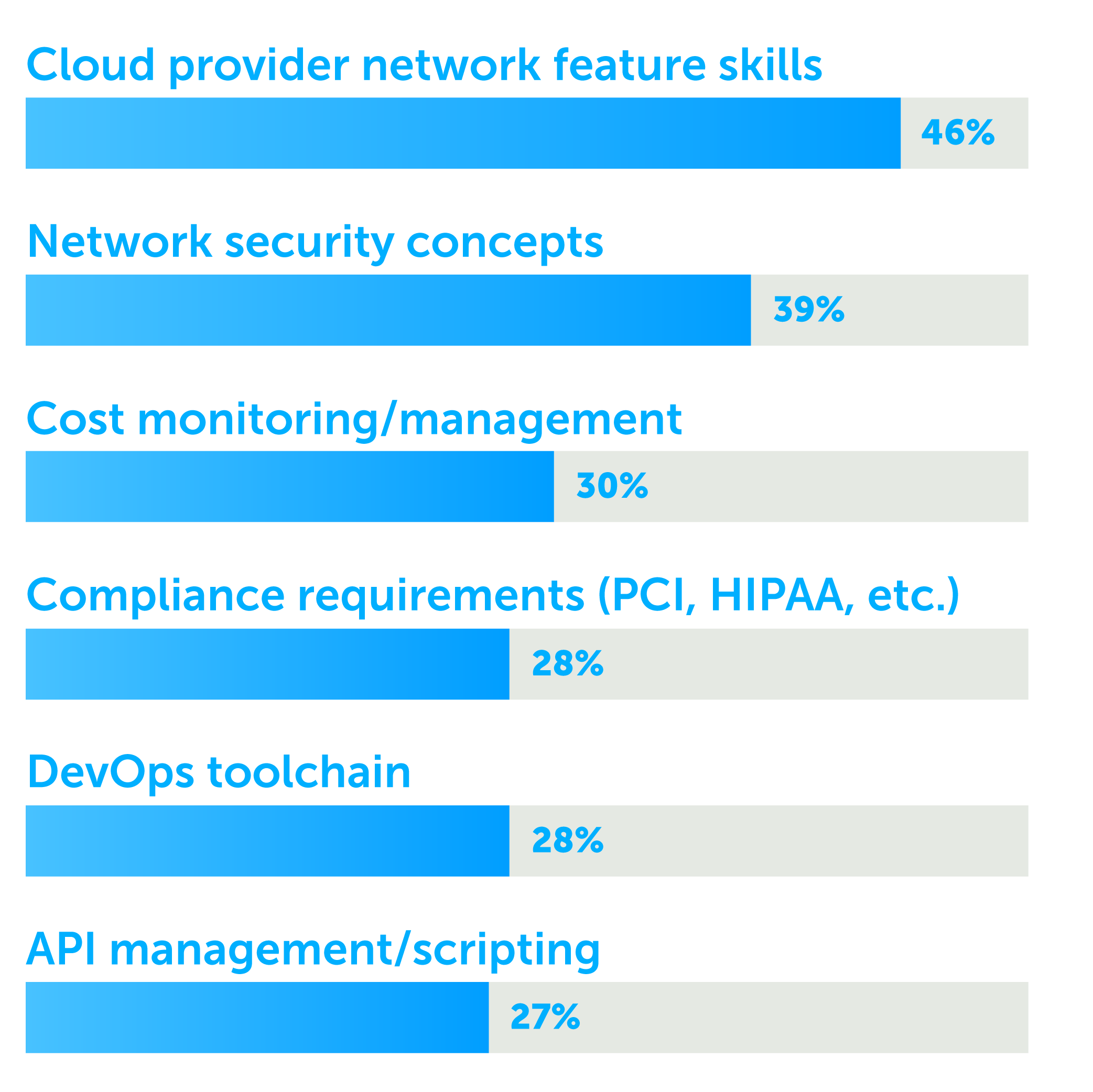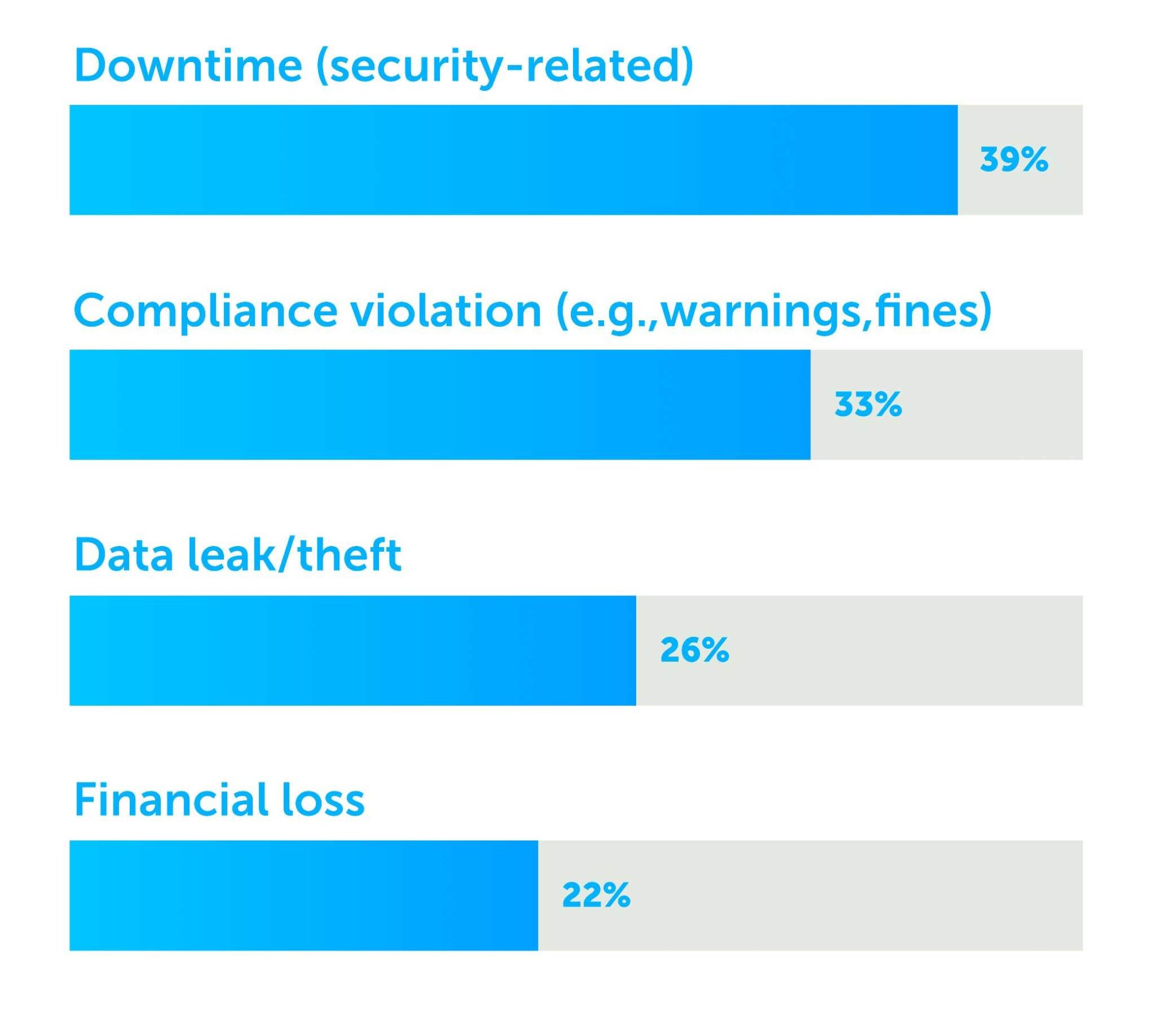Four ways to bridge the network and cloud team divide
The gulf between cloud and network teams inhibits the potential of cloud investments. Learn how CIOs can break down the silos from EMA research and BlueCat.

Three out of four companies fail to extract the full value of their cloud investments today.
One of the biggest reasons underlying this success gap is the gulf that exists between the traditional network infrastructure team and the cloud team. These two teams need to collaborate in order to build hybrid and multi-cloud architectures that are agile, high-performing, reliable, and secure.
Companies that fail to bridge the gap between these teams often suffer significant setbacks. In fact, after surveying 212 networking and cloud professionals in March, Enterprise Management Associates found that:
- 73% suffer security or compliance issues, such as regulatory fines or data leaks
- 89% suffer IT operations challenges, such as delayed application rollouts and poor user experience
- 82% suffer business problems, such as customer churn and lost revenue

CIOs know that network and cloud teams are not natural partners. They use different tools and technologies. They have different priorities for how to deliver a successful digital service. Often, they report to different organizations. Simply telling them to work together is not enough; CIOs need to push hard to break down these silos.
This post will delve into four strategies that CIOs and IT leaders can employ to bridge the gap between network and cloud teams. They are:
- Ensure everyone knows this is your priority;
- Make the network team an equal partner;
- Unify and modernize DDI, security, and compliance across domains; and
- Close the skills gap with training.
Ensure everyone knows this is your priority
Many CIOs introduce policies and programs aimed at improving how the cloud team and the network team work together. However, only 34% of cloud and network pros believe those efforts have been very successful.
“You need to have a change program that addresses those middle management tiers specifically. Bridging that gap is probably the hardest thing to do.”
A CIO’s signature on a memo won’t get the job done. IT executives need to make it clear to everyone that these silos that separate the network and cloud teams must be broken. And that anyone who undermines that priority will be held accountable.
Furthermore, it’s not just the engineers and architects who can be obstacles here. Middle managers can be protective of their turf, too. They often fail to embrace change because they look at it as a tacit admission that their old way of doing things was wrong.
As a cloud architect at an $18 billion financial services company told me, “You need to have a change program that addresses those middle management tiers specifically. Bridging that gap is probably the hardest thing to do.”
Make the network team an equal partner
The cloud seems to be the cloud team’s turf. Cloud providers cater to cloud teams with abstractions and automation that make everything agile and flexible.
When a network team comes to the table with a rigorous approach to network connectivity and security, the cloud team often rejects the network team as a plodding dinosaur that can’t keep up.
This is not a fair assessment of the network team’s ability to contribute to the cloud. The network team can bring stability and security to the table, and the cloud team needs to recognize the value of these capabilities. The CIO must make sure this message is heard.
In fact, successful cloud users are more likely to recognize the importance of the network team’s collaboration. IT organizations that prioritize giving the network team change visibility and input into cloud design are more likely to succeed with their cloud investments.
Unify and modernize DDI, security, and compliance across domains
Many cloud providers offer native tools for managing DNS, IP space, security, and compliance. This has led to fractured engineering and operations processes.
The network team continues using its enterprise-grade tools in the on-premises network while the cloud team uses the native cloud tools. These tool silos can break processes in hybrid and multi-cloud environments.
CIOs need to mandate a unified approach to these core tools. In fact, the majority of enterprises now fully unify security and DNS, DHCP, and IP address management (together known as DDI) across on-premises and cloud networks. Almost half have unified compliance, and two out of five unify IP space management. Enterprises with the most success in the cloud are more likely to unify IP space management in particular.
Close the skills gaps on both teams with training
Network teams and cloud teams will both tell CIOs that they know everything they need to know to get the job done. But that simply isn’t true.
Any technologist will tell you that they never stop learning new skills. For instance, many on-premises network engineers study for cloud provider certifications in their free time.
 Above: As reported by survey respondents, knowledge and skills most important to building and managing hybrid cloud networks and multi-cloud networks.
Above: As reported by survey respondents, knowledge and skills most important to building and managing hybrid cloud networks and multi-cloud networks.Our research has identified two primary training priorities for companies that are trying to improve collaboration between network teams and cloud teams. First, everyone must deepen their knowledge of the network features of individual cloud providers.
Second, everyone needs to understand the basics of network security. Other training priorities identified by survey respondents include cost management, compliance, DevOps tools, and API expertise.
A CIO needs to make it clear that these skills gaps must be closed. Furthermore, they must enable this effort by compensating staff for the costs of acquiring such training and giving them time to accomplish it.
The CIO should also encourage the two groups to share access to the tools they use. The network team can show the cloud team the tools it uses for central visibility across its estate. (In the case of BlueCat’s solutions, they can be used seamlessly across the data center and the cloud.) The cloud team can show the network teams the DevOps tools it uses to automate the cloud. Opening up these tools can go a long way.
Start collaborating now to avoid consequences
Applications are migrating to the cloud every day. As a result, there is no time left to waste. CIOs must lead now, even if they personally face roadblocks. Some CIOs may think this whole process is out of their hands because the cloud team doesn’t even report to the IT organization. That’s no excuse. A CIO can easily pick up the phone and talk to the executive who is driving cloud investments.
 Above: As reported by survey respondents, security and compliance problems caused over the last year by challenges to network and cloud team collaboration.
Above: As reported by survey respondents, security and compliance problems caused over the last year by challenges to network and cloud team collaboration.Avoid these consequences now by following these steps.
Fostering collaboration between network and cloud teams isn’t easy, but it’s also too important to ignore. If these teams remain siloed, it is very likely that your company will experience a security incident, IT operations problems, or business challenges that have real consequences.
For example, among the 73% of enterprises that have experienced security or compliance problems over the last year due to poor collaboration between network and cloud teams, security-related downtime was the most frequent issue. But many also experienced compliance violations and more than one-quarter suffered a data leak.
If you get lost along the way, ask for help. And never be afraid to use your authority as a technology leader to set your company’s cloud agenda.




